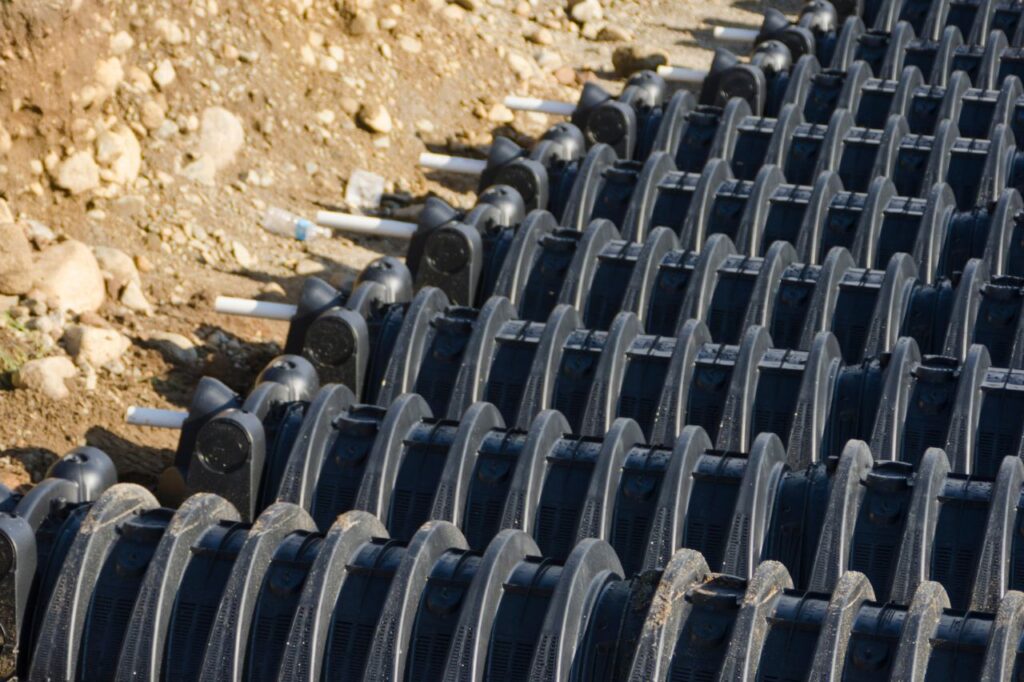Drainfield failure is a common problem that can be caused by clogs, age, overuse, and other issues. Fortunately, many of these problems can be fixed with basic maintenance or repairs. In this article, we’ll discuss how to diagnose and repair your drainfield to get it back in working order.
Table of Contents
ToggleClogged Drainfield Lines
Clogged drainfield lines can be one of the most common causes of drainfield failure. A clog may be caused by debris blocking the flow of effluent or it could be caused by roots infiltrating the piping. To fix a clogged drainfield, you need to diagnose the issue and find out what is causing the blockage. Once that is determined, you can use a combination of unclogging, cleaning, and repairs to restore your drainfield’s effectiveness.
Structural Damage or Settling
Structural damage or settlement of your drainfield can also cause it to fail. If the soil supporting the tiles has shifted, the system could be incapable of properly infiltrating the effluent and need to be addressed immediately. In some cases, the drainfield may simply need to be redistributed or might require a complete replacement. If you are unsure how best to approach this issue, contact an experienced plumber for advice on how best to move forward.
Poor Maintenance Habits
Poor maintenance practices constitute the most common cause of drainfield failures. All too often homeowners pay little attention to their septic system until failure occurs, leading to excessive sediment or grease buildup in the tank that can then clog the pipes and force wastewater uphill and out of them. It is important to regularly service your septic system, which involves pumping and cleaning it at least twice a year in order to prevent any buildup of material that can cause issues further down the line.
Roots Invading the System
Another common cause of drainfield failure is the intrusion of roots from nearby trees and vegetation. Trees with extensive root systems (such as willow trees) can damage pipes and pipework as they grow, breaking into them and causing blockages. If your system has suffered root damage, it is important to repair or replace any broken piping in order to prevent future issues. However, if the problem persists, it may be necessary to remove any trees that present a risk in order for the system to function properly.
Sewage Issues Contributing to Failure
If your sewage tank is experiencing a high flow rate, this can also contribute to drainfield failure. High flow rate occurs when too much wastewater is being exhausted from the tank too quickly, which prevents the drainage field from being able to effectively treat the wastewater. To combat this problem, be sure to monitor the inflow and outflow of water in the sewage tank and reduce any excessive use that may be causing high flow rates.
Everything You Should Know About Drainfield Replacement
Drainfield replacement is a complex process but one that’s essential to keep your property safe and functional. Learn the basics of drainfield replacement, including how to diagnose problems, what parts need replaced, and what products and supplies you will need for the job.
Determine Necessity for Replacement
Before you begin looking into a drainfield replacement, you need to determine if it’s actually necessary. If the existing system is working correctly, then a repair may be much cheaper and more efficient than replacing the entire drainfield. Have a professional inspect the system and look for any signs of malfunction or damage. If they determine that a replacement is necessary, then you can proceed with the next steps of planning and preparing for the job.
Identify Old Drains and Calculator Field Size
To begin the process of drainfield replacement, you must first identify the existing drains and calculate the field size. Measure all of the existing pipes, calculate their area in square feet, and then multiply that by the length and width of your lot. This will give you an estimate of the total space you need to cover with your new drainfield. Be sure to factor in any future expansion plans as well when deciding on the right size for your new system.
Obtain Approval from Local Authority
Once you have identified your drainfield size needs, obtained quotes for the work, and decided on a contractor for the job, the next step is to obtain approval from your local municipality or other relevant government authority. You’ll need to submit plans that adhere to all applicable rules and regulations, including take into account any special circumstances such as proximity to a body of water or environmental sensitivity of the location. Additionally, you may be required to provide proof of funds to complete the project.
Comprehend the Construction Process
Being familiar with the construction process for drainfield replacements is key to understanding how and when it will be completed. The contractor you have chosen should be able to provide a schedule of activities and timeline for the project – from obtaining any necessary permits, to the types of materials that will be used to the rough order in which tasks will be done. This will help you understand what is involved in this important part of drainfield maintenance.
Evaluate Professional Help Options
The process of drainfield replacement can be overwhelming, so it’s important to evaluate your options for professional help. You should ask potential contractors or plumbers what their expertise is in the field and if they have references from previous projects. It’s also important to get an accurate quote from them on the total cost of the project, including any permits, labor and materials that will be required. Doing this research beforehand will ensure you’re hiring an expert who’s reliable and affordable for the job.

